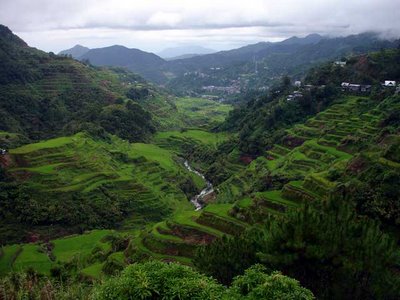 After my voyage on the Ship for Southeast Asian Youth Program in 2002, I tried my best to visit my friends in the various ASEAN countries every year. I remember in 2003, my trip was postponed several times due to SARS. It finally pushed through in September and it was a blessing in disguise since it coincided with the docking of the M/S Nippon Maru in Singapore and Malaysia. In 2004, I went to Hue, Vietnam but wasn't able to meet up with anyone. My mistake was I sent the e-mail message too close to the trip and my SG-mate (the 340 participants are divided into 11 Solidarity Groups or SGs) only found out we were in the same city, attending the same festival when we got back.
After my voyage on the Ship for Southeast Asian Youth Program in 2002, I tried my best to visit my friends in the various ASEAN countries every year. I remember in 2003, my trip was postponed several times due to SARS. It finally pushed through in September and it was a blessing in disguise since it coincided with the docking of the M/S Nippon Maru in Singapore and Malaysia. In 2004, I went to Hue, Vietnam but wasn't able to meet up with anyone. My mistake was I sent the e-mail message too close to the trip and my SG-mate (the 340 participants are divided into 11 Solidarity Groups or SGs) only found out we were in the same city, attending the same festival when we got back. My blog was born during my trip in 2005 to Kota Kinabalu, Malaysia and Brunei. The very first post was actually in my Friendster blog which is still up and about. In April last year, I made a whirlwind tour around Southeast Asia visiting five countries namely Malaysia, Singapore, Cambodia, Thailand and Laos. I've blogged about all these post-SSEAYP trips already except the one in 2003. And thinking about it, I may never get to see again some of the cities I visited during that trip. It would be a pity if I didn't write about them, two of which are heritage towns of Malaysia namely Penang and Malacca. So for the next few days, I'll be looking back and writing about that trip.
My blog was born during my trip in 2005 to Kota Kinabalu, Malaysia and Brunei. The very first post was actually in my Friendster blog which is still up and about. In April last year, I made a whirlwind tour around Southeast Asia visiting five countries namely Malaysia, Singapore, Cambodia, Thailand and Laos. I've blogged about all these post-SSEAYP trips already except the one in 2003. And thinking about it, I may never get to see again some of the cities I visited during that trip. It would be a pity if I didn't write about them, two of which are heritage towns of Malaysia namely Penang and Malacca. So for the next few days, I'll be looking back and writing about that trip.Heritage watch
Enriquez antique mansion goes kaput
Yes people! The Enriquez Mansion along Calle Hidalgo, an 1890s house with Ionic columns and praised by Maria Morilla Norton in 1910 as the "the most beautiful house in the islands," the same one which became the site of the School of Fine Arts of the U.P., is now Acuzar property and has been transferred to Bagac, Bataan. And yes, Acuzar is planning to build a 20-storey building to replace this elegant house in the heritage street.














